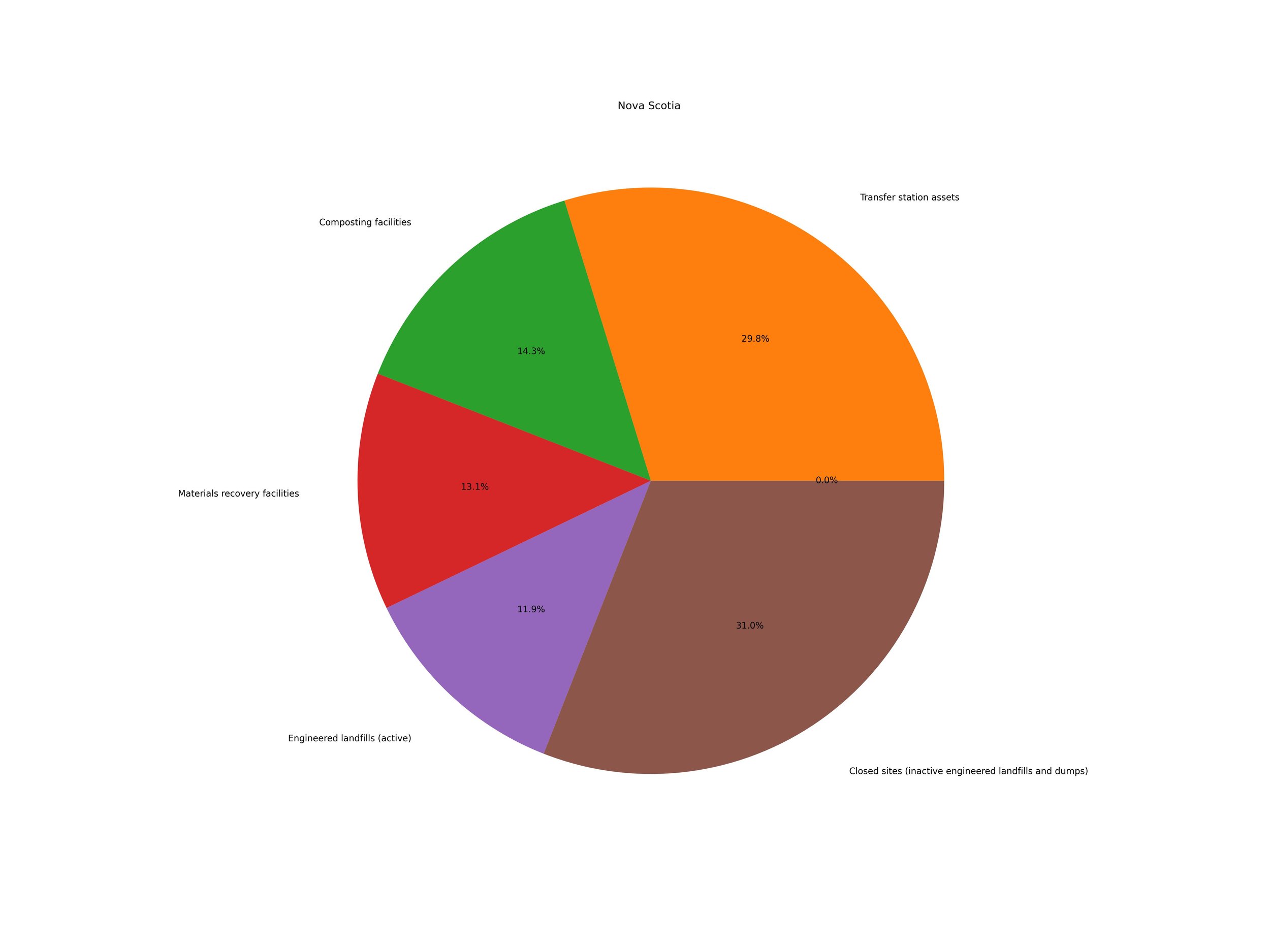Waste in Nova Scotia
Image source: Government of Canada, 2017
Overview of waste in Nova Scotia
Residential vs. Non-Residential waste in Nova Scotia, 2020
In 2020, 157,740 tonnes of waste (39.5%) was generated by residential sources in Nova Scotia, while 241,995 tonnes of waste (60.5%) was generated by non-residential sources. In total, 399,735 tonnes of municipal solid waste was generated in Nova Scotia in 2020 (Statistics Canada, 2024).
Waste production in Nova Scotia, 2012-2022
In Nova Scotia, the non-residential waste slightly decreased by 7.3 % from 219,478 in 2012 to 203,388 in 2014. Then, it steadily increased by 18.9 % to 241,995 tonnes in 2020 before decreasing by 1.2 % to 239,033 tonnes in 2022.
The residential waste of Nova Scotia remained relatively stable with a slight increase of 8.3 % from 145,601 tonnes in 2012 to 157,740 tonnes in 2020. Then, it increased by 10.3 % to 173,909 tonnes in 2022 (Statistics Canada, 2024).
Waste per capita in Nova Scotia, 2012-2022
With a population of 989,154 the waste per capita of residential waste in Nova Scotia was 0.18 tonnes in 2022. The waste per capita generally increased by 13.3 % from 0.15 in 2012 to 0.17 in 2016. Then, it slightly decreased by 5.9 % to 0.16 in 2018 and remained relatively stable until it increased by 12.5 % to 0.18 in 2022.
For non-residential waste, the waste per capita in Nova Scotia was 0.24 tonnes. It decreased by 4.5 % from 0.22 in 2012 to 0.21 in 2014 and remained relatively stable in 2016, then it increased by 14.3 % to 0.24 in 2020 and remained stable until 2022 (Statistics Canada, 2024).
Composition of residential waste in Nova Scotia, 2022
For residential waste in Nova Scotia, there were 107,639 tonnes organic waste (42.8%), 77,630 tonnes food waste (30.9%), 43,881 tonnes paper fibers (17.5%), 11,491 tonnes of plastic waste (4.6%), and 10,665 tonnes of other waste (4.2%) (Statistics Canada, 2024).
Composition of non-residential waste in Nova Scotia, 2022
For non-residential waste in Nova Scotia, 41,810 tonnes were organic waste (42.0%), 31,035 tonnes were paper fibers waste (31.2%), 22,360 tonnes were food waste (22.5%), 3,357 tonnes were plastic waste (3.4%), and 892 tonnes were other forms of waste (0.9%) (Statistics Canada, 2024).
Solid waste assets in Nova Scotia, 2022
In Nova Scotia, there are in total 84 solid waste assets. Specifically, there are 26 closed sites (inactive engineered landfills and dumps) (31.0%), 25 transfer station assets (29.8%), 12 composting facilities (14.3%), 11 materials recovery facilities (13.1%), and 10 active engineered landfills (11.9%) (Statistics Canada, 2022).
References
Government of Canada. (2024). Solid waste diversion and disposal. Retrieved June 16, 2024, from https://www.canada.ca/en/environment-climate-change/services/environmental-indicators/solid-waste-diversion-disposal.html
Statistics Canada. (2024). Table 38-10-0138-01 Waste materials diverted, by type and by source DOI: https://doi.org/10.25318/3810013801-eng
Statistics Canada. (2024). Table 17-10-0009-01 Population estimates, quarterly. DOI:https://doi.org/10.25318/1710000901-eng
Statistics Canada. (2024). Table 38-10-0032-01 Disposal of waste, by source DOI: https://doi.org/10.25318/3810003201-eng
Statistics Canada. (2022). Table 34-10-0236-01 Inventory of publicly owned solid waste assets, Infrastructure Canada DOI: https://doi.org/10.25318/3410023601-eng
Government of Canada. (2017). Provincial and territorial symbols. Retrieved August 15, 2024, from https://www.canada.ca/en/canadian-heritage/services/provincial-territorial-symbols-canada.html
Notes
”Misc.” data refers to miscellaneous data, and indicates any form of waste adding up to less than 3.0% individually, added together in one category for better overview.






